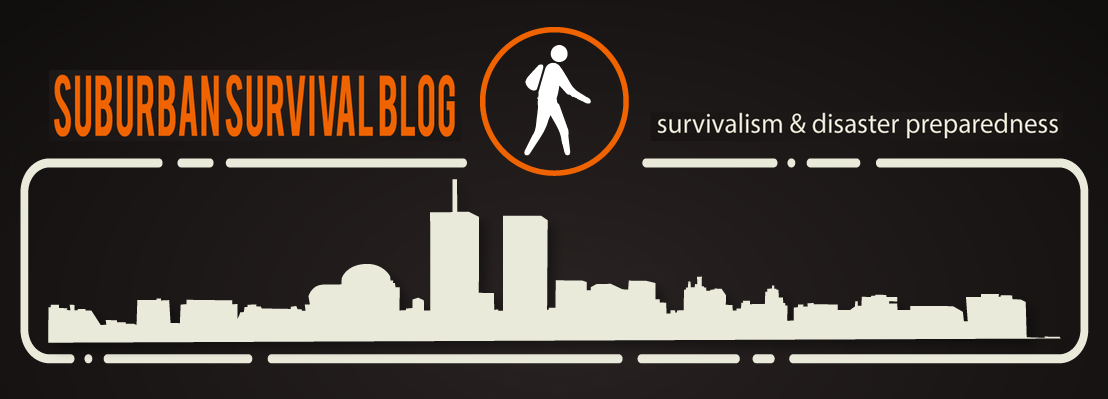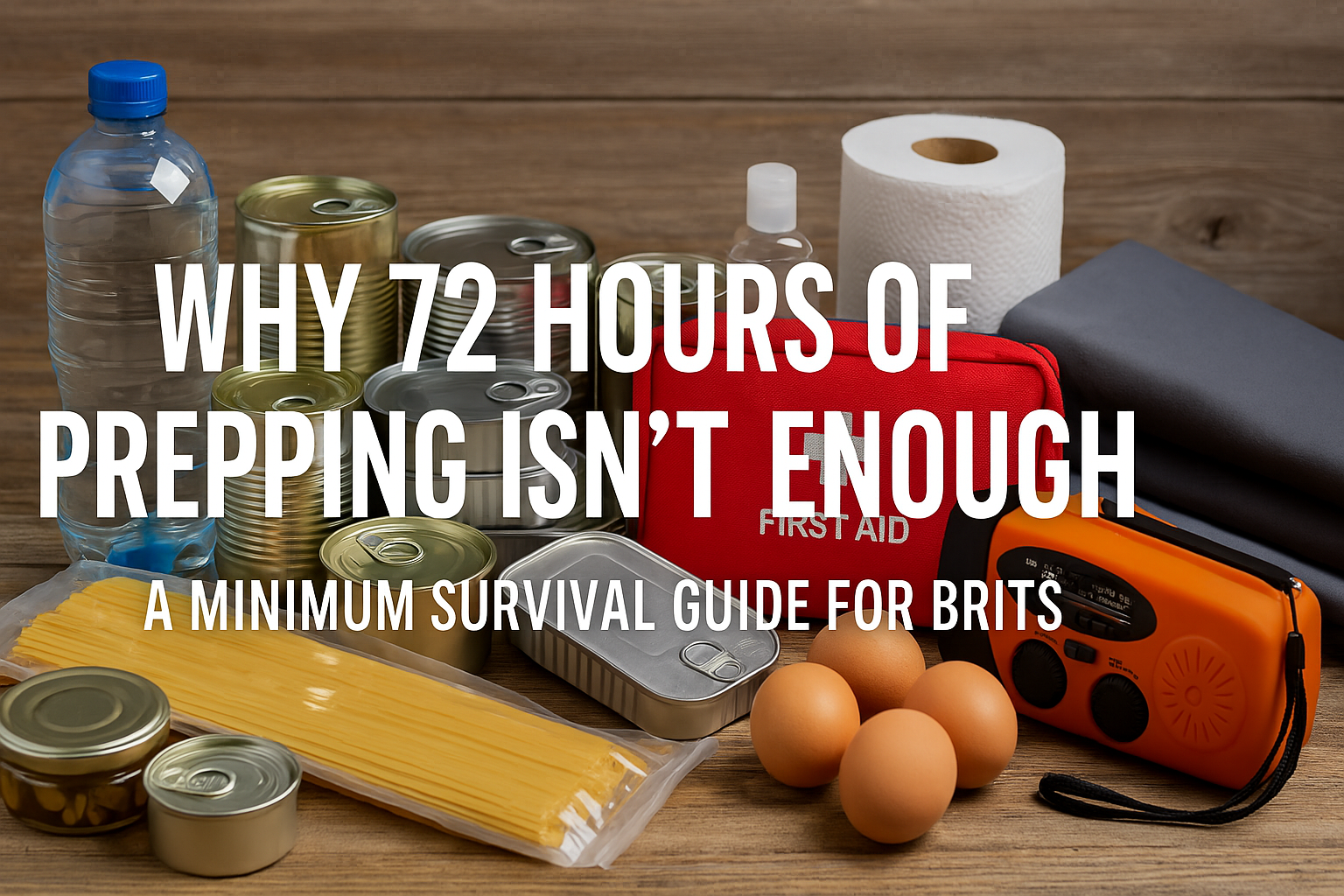So, I have a buddy that is pretty new to prepping, as I am sure many of you do know that we’re dealing with or have dealt with what was supposed to be a global deadly pandemic. Everyone went out hoarded paper products, pasta, etc from the grocery stores earlier this year. He thankfully heeded some advice from myself and good friends that are preppers to get some staples. Not because of the pandemic mind you, but because as preppers we believe it just makes good sense to have food, supplies, gear, etc around just in case the worst does happen to engage with our lives.
When I first started prepping, and if you have followed this blog for any length of time, you will recall I started writing when I was in an apartment in Northern New Jersey. Space was limited, I was one person, I learned, followed other blogs, I made mistakes, went through Hurricanes Irene and Sandy, met some other preppers that would become close friends to this day and some not so close friends, etc. I found that you meet all kinds of people when you prep. But I digress.
Fast forward to 2020/2021, which seems to be everyone’s favorite years (sarcasm implied). My friend is full-on prepping now… He’s buying food, he’s been training in hand-to-hand and firearm combatives’ for a few years… And of course, he is sharing with us what he is buying and asking where we buy and what we buy… You know the normal stuff…
What I wanted to do today (for the readers here, and my buddy), outlines how I prep for food storage. Before I get started though, I will tell you I am no longer in an apartment, but in a house. We have a crawl space but no basement but do have a one-car garage, where many of my preps reside today, with the exception of the off-site preparations elsewhere.
Caloric Intake
When I first started prepping many years ago, I was ‘just buying food.’ As my prepping matured, I realized the human body expends calories and required calories to function. And, that in a higher stress scenario, the body required more calories because the brain insists on making the body burn more calories. So today, much of my food prep mindset is calories in / calories out alongside a nutritional table so that the body can take in the proper nutritional value it needs to stay fully functional and relatively healthy.
I’ll be writing up a post on the caloric intake of food types in a future post so that you get an idea of what it takes to fill your diet with 2,000 — 3,000 calories per day, and have the energy to complete the tasks that are required to be completed in a SHTF situation.
Dry Foods
Almost all dry foods are packaged up in mylar bags with O2 absorbers and put into 5‑gallon buckets. Many of you will no doubt say that if you’re using a 5‑gallon food-grade bucket, you don’t really need a mylar bag. While I tend to agree as I have seen people with beans, rice, etc open up buckets that are 15 years old with no mylar bag, and the food was like the day it went into the bucket. I like a mylar bag as it is an added layer of protection “just in case” and because some of my preps are not in the “ideal” heat or cold ranges for optimal freshness. An extra layer helps protect the preps. So here is how I package some of the dry foods:
Oatmeal Example: Quaker Oats, Quick Oats, or similar brand: Mylar bag, appropriate sized 1,000 or 2,000 CC O2 Absorber(s), seal up the mylar bag, drop it into the bucket, and seal the bucket. I do the same with flour, rice, beans (black, red, lentils, etc), grains, and sugar. A special note on sugar though… Do not use an O2 absorber or you will end up with a brick of sugar. Sure you can break off a bit and mash it up, but hey, why do extra work…
Dehydrated Foods
Dehydrating is a good, low-cost method of preserving and storing some foods, especially fruits and vegetables. Occasionally, when I make a Costco run, I will buy a few bags of 5lb frozen vegetables of various varieties, bring them home, and stick them in the dehydrator for 24 hours at a clip. Once fully dried and dehydrated, I then pack them with O2 absorbers in mylar bags and they go into a bucket with a twist-off gamma lid.
I do the same thing with instant mashed potatoes, pasta, and dried soups that you get a the grocery store. You can buy them anytime, or when they are on sale, and they can go right into a 5‑gallon food-grade bucket and sealed up… I’ve tested 10-year-old instant mashed potatoes that taste like the day you bought them in the store.
A note on eggs… If you do not have chickens and a seemingly endless supply of the world’s most delicious food, you may want to store powdered eggs. I have used many different types of canned powdered eggs, powdered eggs in a pouch, freeze-dried eggs from camping meals, etc. It’s hard to screw them up unless the can or pouch is damaged. Expensive, but good to have… For some reason, I won’t repackage powdered eggs. I will buy them and use them prior to their expiration date. I feel as if they go bad, or expire, they have to go in the trash. I may be wrong but would rather purchase pre-packaged long-term storage with regard to eggs.
As far as beverages, I also buy Folgers Instant Coffee, other non-dairy creamers, teas, and other powdered beverages such as Gatorade, tang, kool-aid, iced tea, etc. as well. While not many like instant coffee, I use it for storage, I have about a year’s worth, and rotate it out to make instant iced coffee in those GNC shaker containers…
MREs
I have way too many of these… But I have a theory, because they are zero prep, cold or hot, and it is generally a complete meal. I probably have about three-four months of (if it is only one person eating) them, otherwise, it is about 30 days per adult person. I have them for fast for low preparation time, portable meals so I can throw one or two in my level one or level two gear. I can put an entire container of them in the back of my truck during a short-term bug out, and not feel like I am missing a beat. Yes, they are more expensive, but if you were to buy a couple cases per person in your home, you would have 12 days of food for each person in the household where there is literally zero prep except to heat it up.
MRE’s are good in a stressful situations so you don’t have to remember anything. Heat, eat, and full of calories. My suggestion might be to have some Metamucil around too so that you don’t get bound up stiff muscle…
Canned Meats, Vegetables, and Soups
I also buy shit tons of canned meats (Spam, fish (tuna) canned ham, which is getting scarce, canned beef (which admittedly I am very low on), and canned chicken. This way I don’t need water (or much water) to prep, and they are portioned well for a small meal unless you have a larger can of something. Additionally, I can simply heat and eat, or mix with rice, beans, or other vegetables to make a complete meal. Worst case scenario, these to can be lifted into the truck to bug out, but ensure you have a can opener or you will be pissed off…
While they are heavily packaged and take up space, they still have nutritional value and caloric value, I lump canned soups and canned vegetables in the same bucket. I will routinely doctor up a can of soup with additional vegetables, rice, beans, and/or meat-based protein to fill a hunger void.
Frozen Foods
We also store (and rotate) some prepackaged frozen foods. These serve the same purpose as the MRE’s. Fast and full of calories. Also bulky and sometimes take up too much space, they need to be used and rotated out. If it is one thing COVID-19 has done for frozen foods, is push food producers to make frozen meals that actually have more flavor, are fresher, and make healthier options available.
In addition to the prepared foods, we store a number of other foods in the freezer, such as bacon, sausage, steaks, ham, poultry, ground beef, etc. not unlike other people do. These likely don’t get rotated as much as they should, but plans are to grow this storage (even with rising costs).
The next thing is to buy another chest freezer to separate the vegetables from the proteins… As well as get several 35 – 50 gallon pickle barrels, clean them up and use them for potable water storage/rainwater cisterns.
Garden Harvest & Canning, etc.
Admittedly, our garden is not huge. I have a very small backyard and the pool fills most of it. However, I do make room to grow herbs, tomatoes, zucchini, beans, peppers, eggplant, strawberries, and tried my hand at lettuce, carrots, radishes, beets, onions, and potatoes this last year. Some of which was very successful, and some of which was a failure (carrots). Anything we could we pickled, canned, made tomato sauce, or dehydrated, and stored. I was actually pretty impressed with how much we could store based on the amount of space we had. It won’t get us through a season, but for all intents and purposes, nature put food on our table, in our home, and in storage for almost free. For that I am grateful.
This was our second-year steam bath canning. We also purchased a pressure canner this year, and are going to start experimenting with canning homemade soups, proteins, etc. More on that another time though…
Water Storage
Likely, water storage is where I am the weakest. When I was in an apartment, and single, I had about 50 gallons of water stored in 5‑gallon water storage containers in a closet, and I have a water bob, in a pinch I used in the apartment. This gave me another 35 — 50 gallons of water storage in the tub which was clean and potable. The water bob came in very handy during Hurricane Sandy and Hurricane Irene when there was no power… When we moved to a house with a pool that all changed…
I do have an inground pool in the backyard, so there is ample water for the moment. However, I do feel as if iI need to add 50+gallon barrels of additional water storage for “semi” portability, the ability to catch rainwater, etc.
In Conclusion
I may be missing a couple items, but this is the high level of food storage. As mentioned above, it is much more than simply buying what we eat and rotating it out. It certainly didn’t start out as a multi-pronged food storage program of sorts. It took time to figure out, get a small baseline, and start to get some critical mass on the storage we have been accumulating…
Let me know what else you are doing that may be different from what we are doing here.









food stores in the home are only good until they run out, what are you going to do then?
learn to grow your own food for sustainability. what people have stored at home won’t last nearly as long as they think they will. weeks, a few months- then what?
sustainability„, food, water and shelter. get into it for the long run guys, as in years.
Hey Tony, there are comprehensive plans in place in parallel with localized food stores. Hunkering down or bugging out to the fallback location(s) and/or bug out location(s) is subjective, but they are there, with gear, storage, as well as agricultural tools, and human resources already in place. We’ve been doing this for a number of years… ?